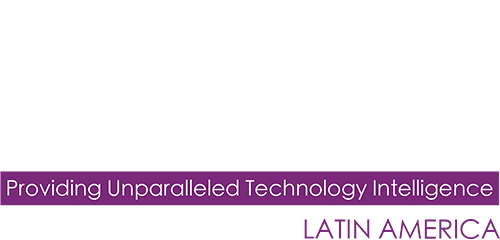In a rapidly evolving tech landscape, platform engineering is critical for enabling both a seamless developer experience and scalable infrastructure orchestration. However, striking the right balance between enhancing developer experience (DevEx) and maintaining robust, scalable systems can be challenging.
Organizations must integrate feedback loops and iterative development and take a product-centric approach to ensure that platform tools meet developer needs without compromising the underlying infrastructure. This requires collaboration across teams, and a focus on standardization, automation and quality.
Derek Ashmore, Application Transformation Principal, Asperitas, answers our questions on how platform engineering can address these challenges and support both developer satisfaction and business outcomes.
How can organizations effectively balance improving developer experience with the need for scalable infrastructure orchestration in platform engineering?
Platform engineering, while intended to improve DevEx, can inadvertently degrade it if not implemented thoughtfully. Here are some ways to keep developer experience balanced with platform engineering needs.
Collaborate with Developers: Involve developers early in the design process to ensure the platform aligns with their needs and priorities.
Iterate Incrementally: Build and release platform features in small, manageable increments based on user feedback. Automated testing for platform engineering products is essential so that incremental improvements don’t degrade the quality of the product.
Measure Developer Experience: Track metrics like platform adoption, developer satisfaction scores, and lead time for changes to identify areas for improvement. In short, adopt a product mindset for platform engineering products so that they are more developer-focused.
Focus on Documentation and Support: Provide clear, up-to-date documentation and responsive support to help developers navigate the platform. Additionally, cultivating examples of platform engineering uses within the organization can help developers consume platform engineering products.
What are the most significant challenges organizations face when adopting platform engineering, and how can these be addressed?
Treating the Platform as a Product is a challenge for most. Treat the platform as an evolving product with developers as the customers. Prioritize usability, performance, and reliability. Release features incrementally and iterate based on developer needs and feedback.
Building self-service capabilities for developers is more difficult than it sounds. Start Small and Iterate. Begin with a Minimum Viable Platform (MVP) for a few high-impact use cases and expand based on developer feedback.
Involve Developers Early. Many platform engineering efforts fail as the products don’t meet current developer needs. Collaborate with developers during the design phase to ensure tools align with their workflows and expectations.
Focus on quality of the platform engineering products. Products that fail or error out when developers use them cost more time than they save. Automated testing of platform engineering products helps you insure that defects aren’t introduced when enhancements to those products are made.
What approaches can platform engineers take to secure executive support for platform initiatives and align them with business outcomes?
Align with business objectives. Connect the platform to organizational goals like faster innovation, cost efficiency, and market growth. Highlight its impact on developer productivity and business outcomes.
Frame the platform as a business enabler. Show how the platform reduces time-to-market, scales efficiently, and boosts customer satisfaction. Link it to revenue growth and cost savings.
Use metrics to tell the story. Quantify pain points like long deployment times and project improvements like increased deployment frequency). Compare current performance with industry benchmarks.
Demonstrate quick wins. Launch pilot projects to showcase early success and build momentum. Use tangible results to justify scaling the initiative.
How do reference architectures and blueprints contribute to the standardization and efficiency of Internal Developer Platforms?
Reference architectures and blueprints help by establishing consistent standards. They help ensure that all teams follow secure, scalable, and reliable patterns by enforcing best practices and uniform approaches, reducing variability and technical debt.
Reference architectures and blueprints accelerate development and deployment. they provide reusable, pre-configured templates that simplify workflows and enable faster provisioning and deployment through self-service capabilities.
Reference architectures and blueprints have scalability and reliability built-in. They use validated, scalable, and fault-tolerant patterns to minimize operational risks and ensure reliability across deployments.
Reference architectures and blueprints simplify developer onboarding. They enable new developers to start quickly with ready-to-use templates, reducing cognitive load and time to productivity. This helps increase the value of the overall developer experience.
What skills and certifications are becoming essential for platform engineers, and how do these trends align with the rising salaries in the field?
Platform engineers should possess advanced cloud computing skills, particularly at a solutions architect level, along with a strong background in infrastructure as code (IaC). This includes proficiency in cloud platforms like AWS, Azure, or Google Cloud Platform (GCP), and expertise with IaC tools such as Terraform, CloudFormation or Pulumi.
In addition, they should have a deep understanding of containerization, with proficiency in Docker, and mastery of Kubernetes for orchestrating containers and managing workloads. Experience with DevOps practices and CI/CD is essential, as platform engineers are expected to build and manage CI/CD pipelines using tools like Jenkins, GitHub Actions, or GitLab, while also being familiar with monitoring and automation tools such as Prometheus, Grafana and Ansible.
Moreover, strong programming and scripting skills are crucial, including proficiency in languages like Python, Bash, or Go for automation and familiarity with integration languages like JavaScript, TypeScript or Java.



